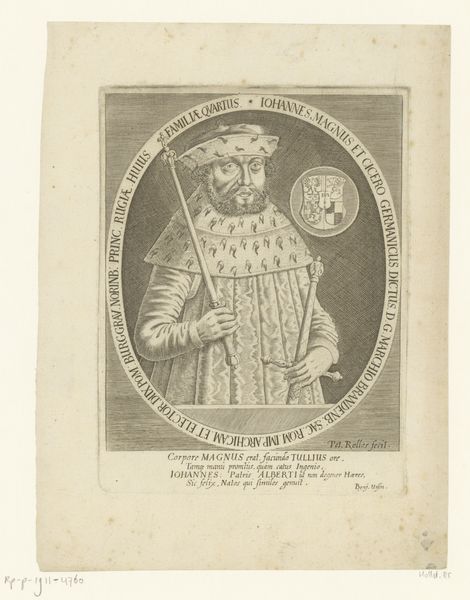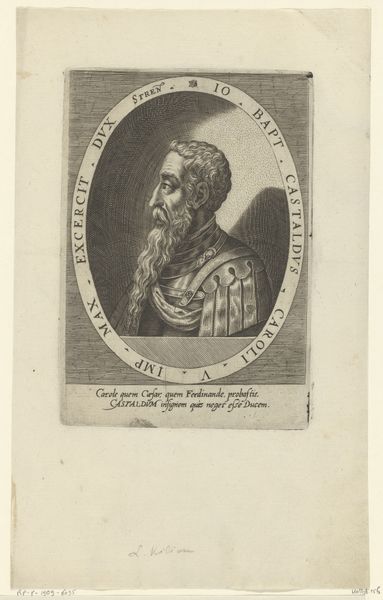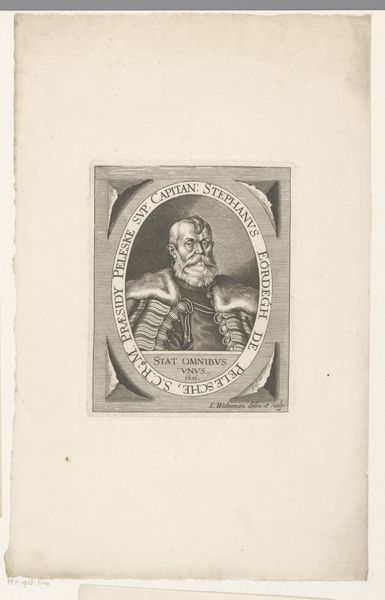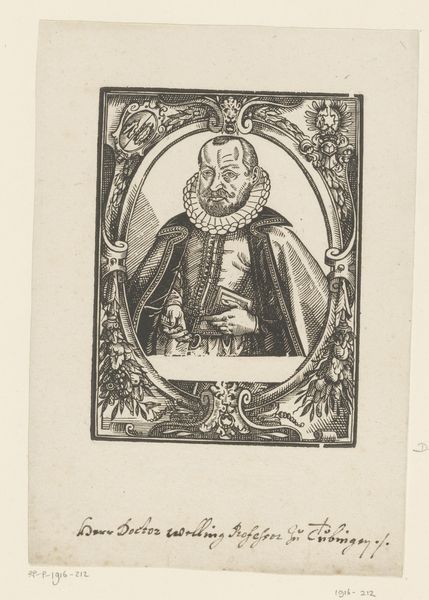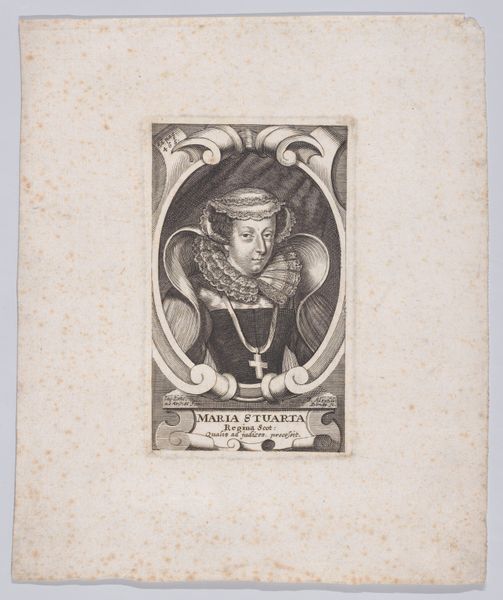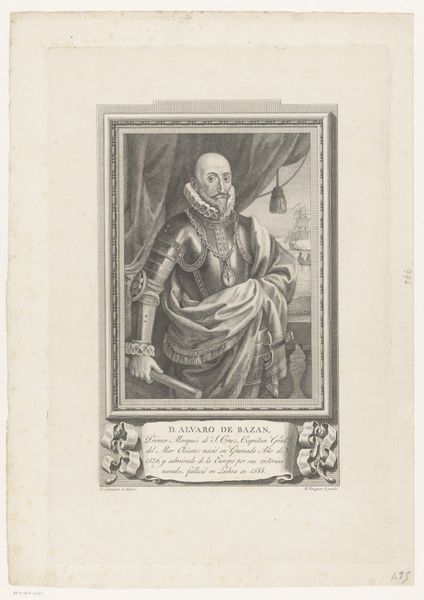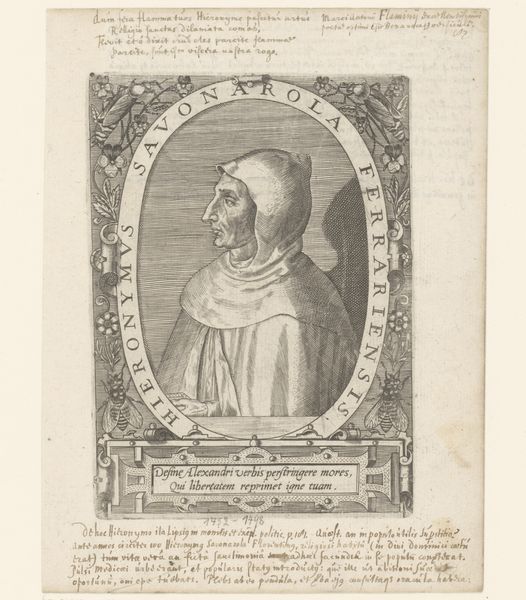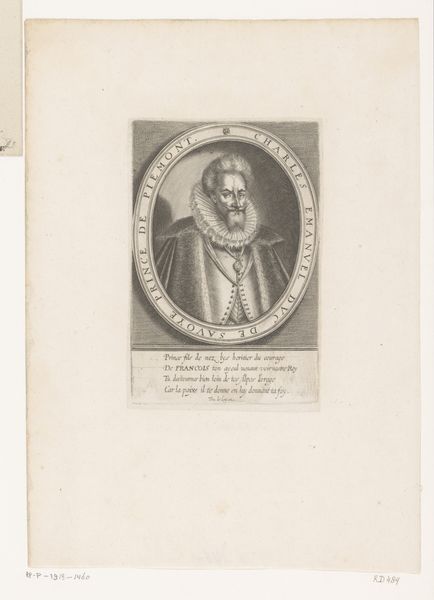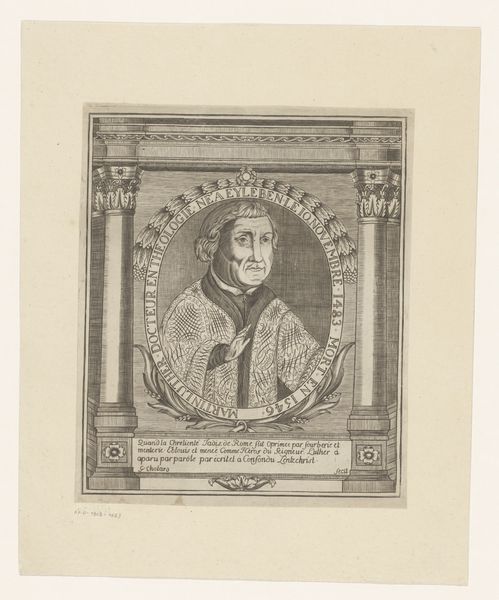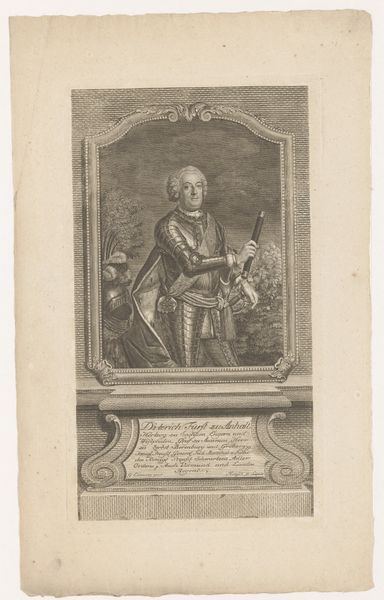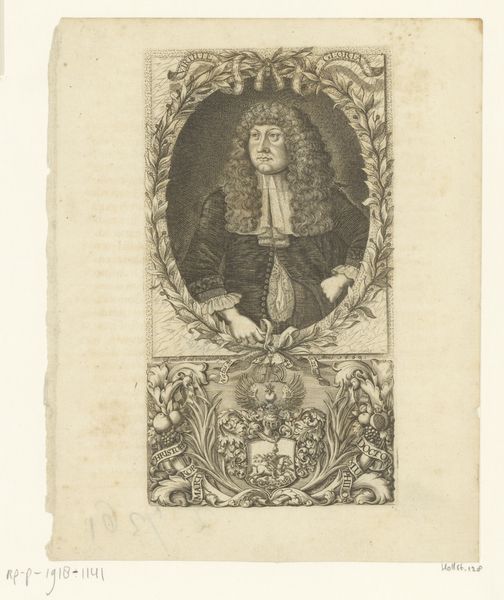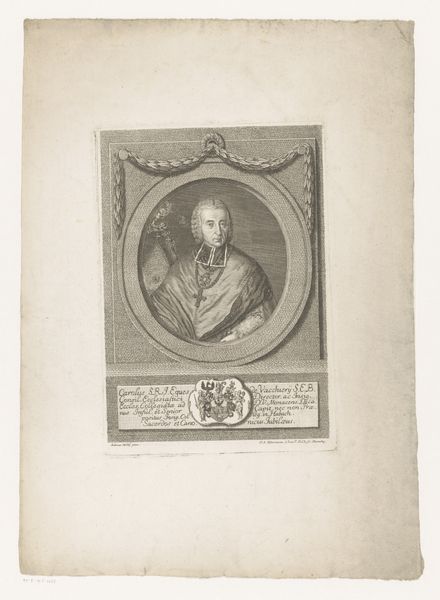
print, engraving
#
portrait
#
baroque
# print
#
engraving
Dimensions: height 157 mm, width 117 mm
Copyright: Rijks Museum: Open Domain
Conrad Grale’s portrait of Matthias Berlich, made in 1619, offers a highly detailed depiction through engraving. The composition is structured around geometric forms; the oval border frames the sitter, contained within a rectangular outer edge. This creates a sense of enclosure, drawing the viewer’s eye to the figure. Grale’s use of line is particularly striking. He employs dense, parallel lines to create areas of shadow and volume, contrasting with lighter, more open areas to define form and texture. The meticulous detailing of Berlich’s clothing, especially the fur collar and the intricate patterns on his garments, showcases Grale’s technical skill and reflects the sitter's status. The inscription encircling the portrait is not merely decorative; it integrates text and image, a common practice in early modern portraiture. Semiotically, this fusion reinforces the subject’s identity and asserts a claim to historical presence. The print, with its refined lines and careful construction, operates within a discourse of representation where the aesthetic form conveys specific cultural and social meanings. It reminds us that the very structure of an artwork carries layers of historical and philosophical weight.
Comments
No comments
Be the first to comment and join the conversation on the ultimate creative platform.
